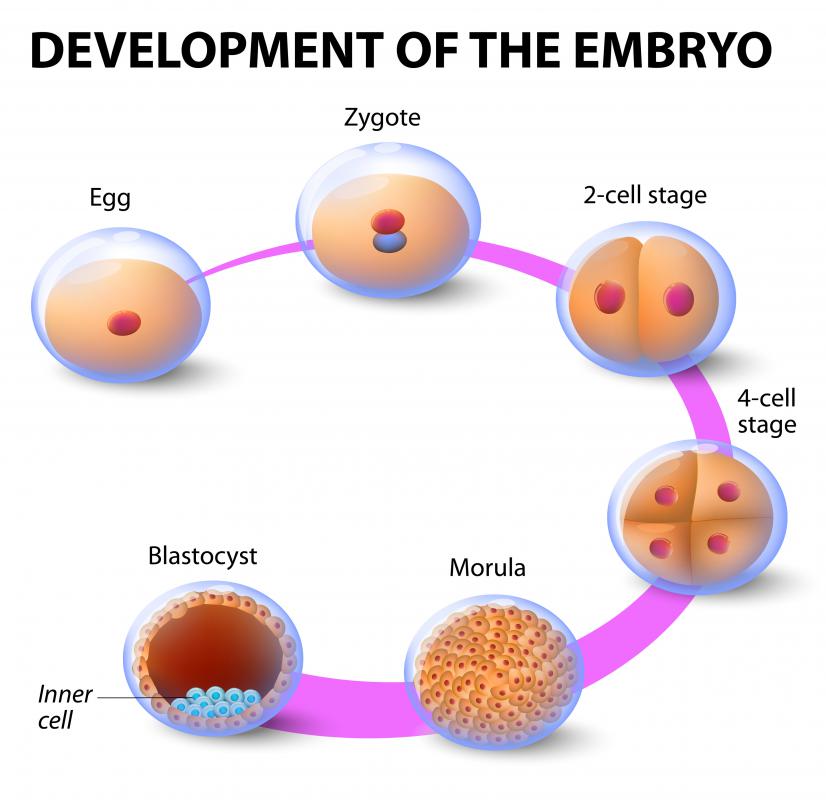At WiseGEEK, we're committed to delivering accurate, trustworthy information. Our expert-authored content is rigorously fact-checked and sourced from credible authorities. Discover how we uphold the highest standards in providing you with reliable knowledge.
What are Chromosomal Abnormalities?
Chromosomal abnormalities are flaws in the structure or number of chromosomes. Depending on the nature of the abnormality, such abnormalities can be incompatible with life, in which case the baby will be aborted spontaneously in the early stages of pregnancy, or they may be almost unnoticeable, sometimes not becoming apparent until someone undergoes routine medical testing for something as an adult. It is estimated that around one in every 150 babies has some form of chromosomal abnormality.
There are two main types of chromosomal abnormalities. The first are structural abnormalities, meaning that the structure of individual chromosomes is somehow damaged or scrambled. The other are numerical abnormalities. A normal baby has 46 chromosomes, created with two sets of 23 chromosomes inherited from the parents, and an unusual number of chromosomes can lead to serious birth defects. The medical term for a numerical abnormality is “aneuploidy.”

Many chromosomal abnormalities occur during fetal development, as something goes wrong when the cells duplicate. In the early stages of fetal development, cell duplication proceeds at an incredibly rapid rate, which means that there are a lot of opportunities for mistakes in replication. When chromosomal abnormalities develop after fertilization like this, they usually result in mosaicism, in which some cells have the abnormality, and others don't.

A chromosomal abnormality can also occur before fertilization. If a mistake occurs during replication of egg and sperm cells, this can result in a chromosomal abnormality if the cell becomes part of a zygote, a fertilized egg which has the potential to develop into a fetus. As the cells in the zygote replicate, the chromosomal abnormality will replicate along with them.

Errors in structure include: deletion, duplication, inversion, insertion, and translocation. All of these errors result in some form of chromosomal scrambling. Either a section of a chromosome is missing, duplicated, flipped, added where it doesn't belong, or swapped with another section of chromosome. Depending on the section and the chromosome affected, such abnormalities can generate severe birth defects, or pass unnoticed. Aneuploidy can take the form of trisomy, in which a pair of chromosomes has an extra chromosome attached, or monosomy, in which one half of a pair of chromosomes is missing.

As a general rule, chromosomal abnormalities are not inherited, because they arise from mistakes during cell duplication. The risk of chromosomal abnormalities increases with age, which is one reason why extensive prenatal testing is recommended for older mothers. However, it also happens in younger women, and many miscarriages are the result of chromosomal abnormalities. In the event that a child or fetus is diagnosed with chromosomal abnormalities, a number of options are available, and the situation can be discussed with a genetic counselor.
AS FEATURED ON:
AS FEATURED ON:
















Discuss this Article
Post your comments